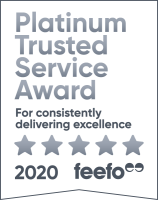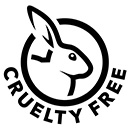Cosmetic Safety Assessment Information

A Cosmetic Safety Assessment is just one of the legal requirements needed in order to sell your cosmetics or toiletries to the public. Ensuring you are legally compliant is of up most importance, to protect your brand, your reputation, your products and most importantly your customers. By following the correct regulations you build a trusting and strong relationship with all your customers and other business, as well as increasing a positive reputation for your wonderful creations. Any cosmetic or toiletry product, intended for sale to the public, that comes into contact with the skin, requires a CPSR. From Soaps to Lotions, Bath Bombs to Make Up, it is about ensuring your product is safe for use on the skin. A product not intended for use on the skin, doesn't require a CPSR, i.e Candles, Shower Steamers, Rooms Sprays etc.
A Cosmetic Product Safety Assessment, known as a CPSR, is legal documentation, provided by a chemist, to ensure the safety of your recipes and finished products. Where it's recipes are checked in detail to ensure all processes have been followed correctly and the quantities of your ingredients are within a safe limit. Current EU legislation and the requirement for safety assessments (CPRS's) on cosmetic products, has now been in existence for several years. We wanted to provide a brief overview of advice and a variety of solutions for our customers. To ensure your own finished products are properly and correctly assessed so as they can be legally sold within the UK and EU.
Purchasing a CPSR through The Soap Kitchen
We want your products to be safe just as much as you. The preparation and submission of formulas for a CPSR is a time-consuming process. Due to the expertise required and the time it takes our team to provide a CPSR, we can charge an admin fee where an uncompleted CPSR has been processed and then refunded. We cannot stress enough, that are abilities and expertise are part of the package, which unfortunately means we are not an unlimited source of free advice. We understand that making the decision to purchase a CPSR is not always an easy process, but due to the in depth knowledge required, we cannot go into too much detailed advice until a CPSR has been purchased. Our packages are designed to be relatively simple to understand and should you find you've purchased an inappropriate package we will happily advise you, and move you to the most suitable for your requirements.
We now supply easy-to-complete interactive forms for submitting your formulas and information please ensure they are fully completed. We can no longer accept hand written or alternative format data submission forms.
If you cancel your order after 28 days and/or we have already received your information and started work on preparing your CPSR we reserve the right to charge an administration fee of minimum 20%. We reserve the right to update, change, replace or discontinue any product at any time.
Please note that once your recipes have been submitted, if you don't receive any feedback from the chemist, that usually means they're writing your assessments and your recipes are fine! We'll contact you with any news or changes that the chemist will need making, and can relay any feedback you pass to the chemist.
Before purchasing your CPSR please ensure you have all the correct information available. This includes your recipes, variations, allergen information and IFRA documentation for fragrances. Please note: This information should already be collected for your PIF records and needs to be available if requested by the chemist.
Surcharges
On occasions the laboratory will highlight the need for additional testing for several possible reasons and where these are required, additional charges will need to be applied. Commonly these are... TVC (Total Viable Count) where an actual product sample is required to test. Challenge or Stability testing, which again require samples and may take several weeks to complete. Quite commonly additional surcharges are applied where interaction between multiple fragrance materials requires further exploration OR where Exposure viability requires authenticating, such as when a product is designed for the body but you (the customer) require it also for facial use.Our Assessment Options & Advice
1. Affordable, limited, safety assessment packages (CPSR's) compliant with 2013 legislation. Developed in conjunction with an experienced industry provider which allow the small business/crafter to produce their own finished products using various 'packages'. Available at affordable prices using a wide selection of products sourced from The Soap Kitchen and other EU & UK based stockists.2. Bespoke assessments, challenge testing, technical advice and on-going product support which is handled either by us or directly from our retained consultants.
For those of you reading this page for it's informational content about compliance with legislation, we have given below a basic summary of how to comply with legislation as it currently stands and what it requires you, as the manufacturer of your own products to do. All to ensure you are able to legally sell your products within UK and EU member states.
The manufacturer (you) should prepare a Product Information File (PIF) which should contain all information regarding manufacturing method, ingredients, MSDS for all ingredients, allergen information, labelling detail, batch records and traceability. This file should be kept available for viewing by anyone requesting so. It is also a great way to build up a routine when creating cosmetics and toiletries to industry standards.
Batches... Each 'batch' of product should be issued with a batch number. As well as having a full list of ingredients and origin of ingredients, kept for scrutiny if required. Batch numbers should appear on any product labelling to ensure it can be accurately linked to the batch information for traceability purposes.
Labelling...all product labelling should comply with INCI legislation, which states that the INCI names for ingredients should be clear and legible. Either on the product itself, or where not appropriate, maybe because of size or where a product is offered unwrapped, should be clearly visible at the point of sale or on any over-packaging such as outer boxes or wrap. Ingredients should be listed in descending order of weight as they are included in the manufacture of the product and should use the approved INCI names for each ingredient used. For a guide to INCI terminology for common ingredients Click this link.
Natural Soaps...for a naturally saponified soap, which would have oils and lye in manufacture, but would then not have any significant amounts of either oils nor lye remaining in the final product, the 'soap' ingredients are listed in approved terminology relating to the finished substances. E.G. Soap made from Olive Oil and Lye would be listed as 'Sodium Olivate'. There is no need to refer to oils as their INCI names nor to Lye (Sodium Hydroxide), as it is not present in the finished soap.
Ingredients of 1% or less concentration can appear in any order at the end of the ingredients.
Allergens (sensitisers)...certain allergens present in many essential oils and fragrance oils must be included in the INCI labelling in cases where they exceed 0.01% in rinse-off products (soaps, shampoos etc.) and in 0.001% in leave-on products (moisturising creams etc.).
Product labelling should also include a 'point of contact' address for the manufacturer (you), as you are the responsible person, you hold the CPSR and any other documentation that may be required.






